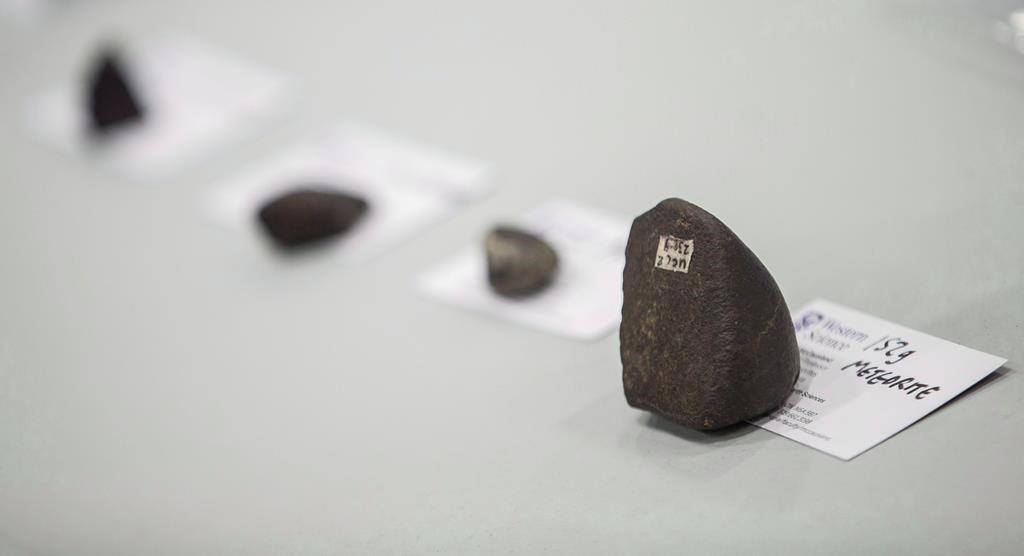Residents in Ontario’s Niagara region are being asked to keep an eye out for pieces of a meteorite that crashed down in the area this weekend.
The meteorite lit up the sky between Toronto and Hamilton early on Saturday morning and let off a sonic boom before it broke up in the atmosphere.
Peter Brown, a member of the Western Meteor Physics Group that monitors and studies meteors, said the meteorite weighed about 500 kilograms and was less than a metre in diametre when it entered the Earth’s atmosphere around 3:25 a.m. on Saturday.
It’s very rare for scientists to be able to record the passage of such a space object with a lot of detail, he said, which is why scientists are asking for the public’s help in finding fragments of the meteorite.
Such meteorites are collisional debris from larger asteroids in the main asteroid belt, said Brown, who is also a Western University physicist. It likely broke off millions of years ago from a larger asteroid and then drifted into the inner solar system before eventually colliding with our planet, he said.
“If we can recover pieces of this, we’ll be able to connect the meteorite with the fireball with the asteroid in space,” Brown said.
“That’s really rare, essentially, (it’s) almost never been done before. And it gives us deeper insight into what asteroids are like.”
Telescopes and asteroid-monitoring technology have improved in the last few years and enabled researchers to detect this meteorite before it hit, Brown said.
“This asteroid was detected in space. It’s the smallest asteroid that’s ever been detected in space,” he said.
“This was over 100,000 kilometres away when they detected it. So, to find a beach ball size thing in space, that far away, is pretty amazing and it underscores how good the surveys have gotten.”
Brown said his research group believes small pieces of the meteorite made it to the south shore of Lake Ontario, around Grimsby and Vineland, and larger pieces that could weigh several kilograms landed north of St. Catharines.
“Things that are bigger than about a kilogram, or so many kilograms, will actually leave pits. They’ll actually hit the ground fast enough that they’ll excavate a little bit of a hole,” he said.
“It’s a matter of going out and walking the area looking for something.”
Meteorite pieces belong to whoever owns the land they fell on so people who want to look in farm fields or private properties should seek permission from the owners, Brown said.
Kim Tait, a mineralogy, meteorite and gem curator at the Royal Ontario Museum, said a group of researchers surveyed the area looking for the space rocks over the weekend, but they couldn’t find anything due to the snowy weather.
“Just with the weather conditions they didn’t have much luck finding anything. It’s quite a large area,” she said. “It’s sort of a needle in the haystack to be able to find it.”
Tait said some of the snow has melted down since then and that could help people find the black magnetic pieces of the meteorite.
“If they’re walking their dogs or (going) in their backyard, they see something they didn’t see the day before, then to maybe give us a call and we can have a look at it,” she said.
“It has this black outer surface, almost like charred …, but a little bit more glassy. And it’s very smooth. So this is sort of the first thing I would look for.”
This report by The Canadian Press was first published Nov. 22, 2022.



